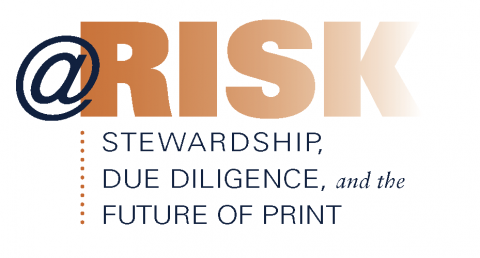CRL’s Committee on the Future of Print met recently to help frame the discussions at the upcoming @Risk Forum, on April 14-15. We talked about how much information librarians need to make responsible decisions on withdrawing and otherwise managing their print serial holdings. And about how much information is enough to help them justify those decisions to faculty, administration and others to whom they are accountable..
At the June 25 PAPR II summit John Unsworth, of Brandeis University and the EAST project, asserted the need for “trust metrics,” to enable library decision-makers to evaluate the trustworthiness of archive programs. CRL's PAPR database provides information about the holdings of archive programs, and brief descriptive information about the programs themselves, such as the Linda Hall Library journals repository.
CRL has been experimenting a bit, linking contextual information about the programs to PAPR, in the form of “profiles”. To provide information on aspects of archive programs that may have a bearing on archive trustworthiness, the profiles include such information as the level of holdings validation, the degree to which archiving commitments are formalized, and program services and resources. We posted online two of the draft profiles: CRL’s JSTOR archive and the Linda Hall Library repository.
Committee members, reviewing the profiles, thought this kind of information could be useful in increasing transparency in print archiving and collection management. They recommended that some of the information be presented in a structured rather than narrative form. And they felt that more precision was called for, in the terminology about holdings validation and conditions of storage, for example. However, the idea of extreme codification, i.e., “rating” the archive programs, was voted down, the consensus being that the profiles should be descriptive rather than judgmental.
In general the Committee affirmed the value of sharing actionable information, even when it is not quantifiable. It would be good for libraries to know, they agreed, the details of retention commitments, and about changes that occur in the print retention strategies and policies of major repositories and “libraries of record”.
All this will require striking the right balance between data and “narrative” in the information CRL provides. We will talk more about this at @Risk. Meanwhile, we continue to seek ways to augment the data in PAPR about archives and archives holdings with profiles and other supplementary resources about the conditions and terms of archiving.
Bernard F. Reilly
President (2001-2019)
Center for Research Libraries
